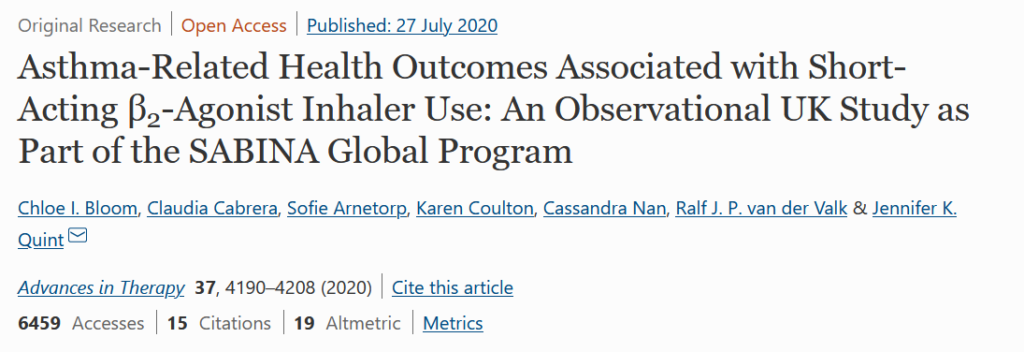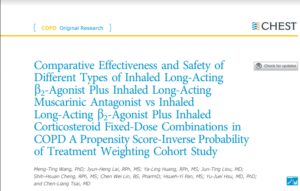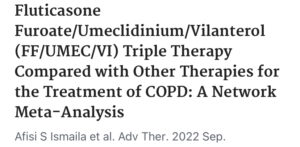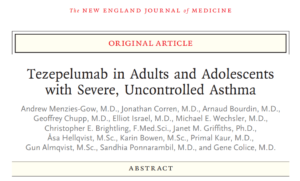
This month in our journal club we discussed whether it is safe for patients with asthma to be reliant on a rescue inhaler, which is commonly referred to as a “blue puffer” (e.g Ventolin, Salbutamol) and belongs to short acting beta-agonist class of medications (SABA). Those who suffer from asthma know that SABA provides quick relief to their symptoms and therefore many would rely on SABA for management of their asthma. But is it safe to do so?
We reviewed 2 papers of studies completed in the UK and Sweden. Both were retrospective longitudinal open cohort studies on large databases. The UK study used their primary care electronic healthcare records (Clinical Practice Research Datalink from 2007 to 2017) and included all asthma patients older than 12 years. The study in Sweden utilized national Swedish health registries: the National Patient Registry covering all hospital admissions and outpatient specialist visits, the Prescribed Drug registry, covering all collected outpatient drug prescriptions and The Cause of Death Register. The study population included all asthma patients aged 12-45 years.
The SABA use was quantified as the number of canisters per year. Patients were grouped according to their use of SABA during the baseline period of 1 year. Appropriate use of SABA was defined as less than 3 prescriptions per year. The studies looked at frequency of exacerbations, ER visits and hospital admissions. The Sweden study indicated higher all cause mortality with increased use of SABA.
Both studies showed similar results. The more people used SABA the more likely they would have an exacerbation requiring a hospital or emergency room visit. There was also a suggestion of higher all cause mortality in high SABA users. This finding was independent of other characteristics of the patients or the amount of maintenance therapy they received.
As many as 3 prescriptions for SABA in a given year puts the patients with asthma at risk for severe exacerbation.
Published: July 2020 and April 2020
The link to both of the papers can be found below.
Swedish study: https://www.ncbi.nlm.nih.gov/pmc/articles/PMC7160635/
UK study: https://link.springer.com/article/10.1007/s12325-020-01444-5




